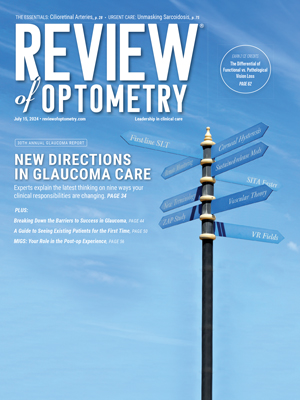The authors of a study presented Tuesday afternoon at ARVO 2019 in Vancouver have found it difficult to reliably diagnose dry eye disease (DED) as well as assess its severity in clinical practice—not unlike most ODs. They decided to investigate a new approach to identifying DED by measuring the physical properties of the tear film, specifically one called effective extensional viscosity, which they measured using acoustic rheometry. They found this metric is compromised in DED and that more severe DED is associated with a greater reduction in it.
The Melbourne-based team assessed DED in 43 controls and 60 subjects diagnosed with the disease. They collected basal tear samples (2µl/eye) noninvasively, and asked a masked examiner to quantify extensional viscosity. Tears from eyes with DED had significantly lower numbers. The study also found that a lower effective extensional viscosity is associated with more severe DED. There was also a moderate positive correlation between effective tear film extensional viscosity and noninvasive tear break-up time.
The authors believe their results support the utility of tear effective extensional viscosity as a novel test for diagnosing DED in clinical practice.
“Other fields in healthcare have used rheometry, and this technology may be employed someday as a device marker for identifying DED and stratifying it by severity,” notes Joseph Shovlin, OD, of Northeastern Eye Institute in Scranton, PA.
| Downie LE, Lee J-H, Makrai E, et al. A novel approach to identifying dry eye disease using acoustically-driven microfluidic extensional rheometry. ARVO 2019. Abstract 4189. |

